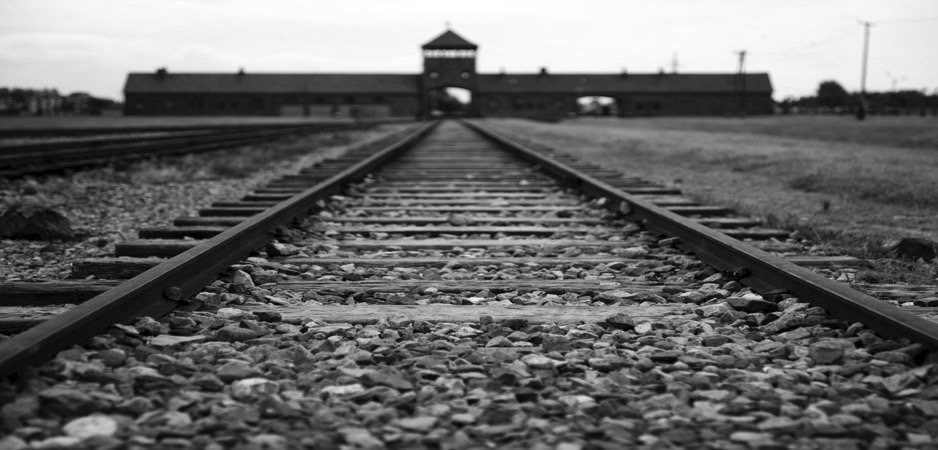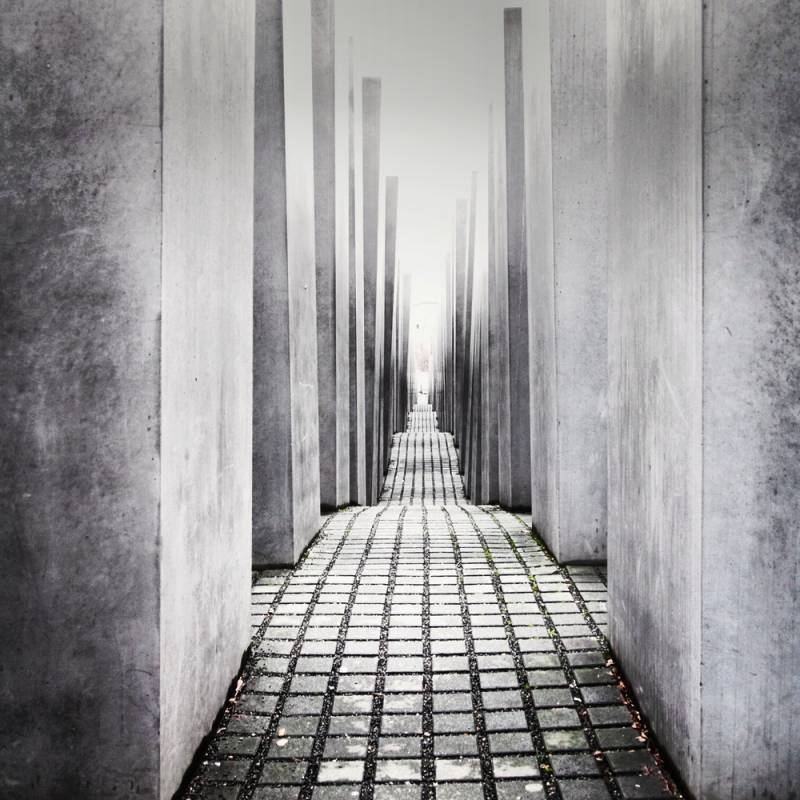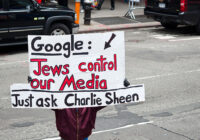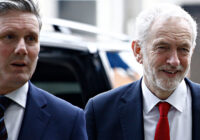Debating with Holocaust deniers may be pointless, but trying to understand their motives and arguments is not.
Each year, I take a vote in my “The Third Reich, 1933-1945” module at Teesside University as to whether the subject of Holocaust denial should replace an existing lecture on the development of Nazism’s Final Solution – say, on the history of Auschwitz-Birkenau, or the actions of the Einsatzgruppen – those mobile killing squads following behind the Wehrmacht’s invasion of the Soviet Union (USSR) in June 1941. Nearly every year, my students overwhelmingly vote to ignore the subject. There are certainly good reasons for doing so, in fact: A close colleague researching the Holocaust understandably refuses to give any attention to Holocaust denial, since “it’s just an insult to both victims and history.”
I want to call this the “round earth” rejection of “Holocaust denial.” This was most aptly characterized by James Najarian, a wise interpreter of the various methods involved in denying the Holocaust: “Flat-earthers believe that the earth is flat and the United States space program is a hoax. This does not make the rest of us round-earthers; we don’t need a name for ourselves.”
In contrast, motivations for Holocaust denial, to this day, are overwhelmingly advanced for racist and ideological reasons, especially anti-Semitism and fascism. It is understandable, therefore, that many people feel passionately that there is no debate to have with deniers. The Holocaust took place, and spending even a second on the subject of Holocaust denial is simply a waste of time. True, there is indeed no benefit in debating whether the Holocaust “happened” with those who think, against the mountains of evidence, that it did not. Yet it does not follow that simply ignoring this phenomenon altogether is the best way forward.
Nazis Were the First Holocaust Deniers
Some of the techniques by Holocaust deniers are so ludicrous as to defy belief. And it is also true that we can group some Holocaust deniers alongside people who think the US space program was faked, or that 9/11 was an inside job, or who wear tin foil hats to protect the brain against radiation or mind control. This “tin foil hat brigade” are likely to see every major historical event as a conspiracy; some sort of inside job that helps to conveniently explain how bewildering – and how cruel – the real world can be.
But this is the least serious and least important of the forms Holocaust denial takes today. Most Holocaust deniers today accept that the world is round, and they try to find ways of occluding the accepted view of history. Some of the more dangerous forms of Holocaust denial, in fact, goes by the tag “Holocaust revisionism,” so as to appear moderate and convincing – as simply another “point of view” that everyone’s entitled to.
A correspondingly slick surface can be seen on professional websites and many books aiming for the look, scholarly apparatus and jargon of academic respectability. It is this more “intellectual” form of Holocaust denial – such as claiming that the gas chambers were merely a “detail of history,” as Jean-Marie Le Pen recently reaffirmed – that is illegal in most of the European Union today, including France, Germany and Austria, but not Britain.
The central underlying theme of anti-Jewish hatred takes us back to the wartime Holocaust: the most horrifying expression of anti-Semitic hatred, and of genocide, in history. Closely related, the first people to systematically deny the Shoah – the extermination of all of Europe’s Jews – were the Nazis and their collaborators. Elites in the Third Reich destroyed evidence, ranging from documents to crematoria; they exhumed and burned already-desecrated corpses; and they kept the existence of their so-called “Final Solution to the Jewish Question” as great a secret as possible during the Second World War.
In tandem with the development of the historical Holocaust itself, therefore, Holocaust denial was employed in various by Holocaust perpetrators; that is, the Nazis and their collaborators during the war.
An Architect by Trade
An architect by trade, the 46-year-old Paul Blobel commanded the infamous Einsatzgruppe 4a in Ukraine that followed the Wehrmacht into the Soviet Union on June 22, 1941. Although Jews had been persecuted for the preceding eight years under the Third Reich, and many thousands of Polish Jews had already been killed since the onset of the Nazi occupation there from September 1939, the invasion of the USSR, code-named Operation Barbarossa, immediately marked a step-change in the targeting and mass murder of Jews.
At first, shooting thousands of Jewish men as partisans, soon the roving Einsatzgruppen began murdering tens of thousands of the elderly, women and children a month. In September 1941, Blobel organized the largest recorded murder in history to that date: the shooting of 33,771 Jews at the Babi Yar ravine just outside of Kiev, as meticulously documented in the Einsatzgruppen situation reports.
In order to conceal the growing scope of these activities in the east, the Nazi leadership looked for alternatives for mass shooting that would provide greater secrecy. In the closing months of 1941, new decisions were taken on what had moved from mass murder to systematically-planned genocide. On September 3, gassing with Zyklon B was tested at Auschwitz-Birkenau; from November 1, 1941, construction began on new extermination camps at Bełżec and Chełmno, with the latter starting to murder Jews by carbon monoxide on December 7, 1941, in occupied Poland.
These methods were derived from earlier programs to murder disabled people using reinforced gas vans; when the so-called “euthanasia program” was concluded in August 1941 – revealingly, due to a public outcry raised by Bishop von Galen – these secretive vans were sent to the Einsatzgruppe still operating behind the front lines. Paul Blobel’s Einsatzgruppen C Kommando received two of these gas vans in November 1941 and were the first to use them in the occupied east.
By the time of the infamous Wannsee Conference on January 20, 1942, which informed, coordinated and set to work the Third Reich’s different agencies of state in carrying out the genocide of all of Europe’s Jews under Nazi control, another so-called “problem” needed a “solution”: Tens of thousands of bodies buried in shallow graves were impossible to conceal and were poisoning water tables along from the Baltic in the north and the Balkans in the south.
In mid-1942, Blobel was put in charge of the exhumation and cremation of these bodies, under the code-name Sonderkommando 1005. Its job was to erase as much of the evidence of Nazi crimes as possible, extending to exhuming and burning bodies in open air pits. This involved grisly techniques to efficiently cover-up many Holocaust sites in central-eastern Europe; for example, Chełmno was partially-demolished, and Bełżec was completely destroyed, with a Ukrainian farming family placed on top to hide the minimum of 434,508 Jews murdered there in nine months.
The role played by Blobel, who was hanged in Germany in 1951 for his crimes, is horrifyingly instructive. He helped organize the mass shootings of Jews in the second half of 1941. In 1942, when more secretive extermination camps began operating, Blobel organized the removal of evidence of Nazi genocide and testified about his activities in the 1948 Einsatzgruppen trial.
The case of Paul Blobel provides clear evidence that Holocaust denial was undertaken by the very murderers themselves, in order to eliminate all traces of their unprecedented crimes. Holocaust denial, then, was originally deployed during World War II by the Nazis for self-serving, sanitizing and, above all, anti-Semitic reasons.
The Third Reich’s attempt to murder every European Jew under their control and, more relevantly, their systematic attempt to conceal this unparalleled crime, were both unsuccessful: millions of Jews survived the tyranny of the Third Reich. Holocaust deniers must contend with thousands of corresponding testimonies by perpetrators and victims alike, they must ignore tens of millions of pages of contemporaneous documents, and they must argue that both general understandings of history and generations of academic historians are deluded, deceitful or conspiratorial in their scholarship on the Holocaust.
Rhetoric of Denial
To throw this point into some relief, we have but a handful of authentic sources about the Spanish Armada or the Great Fire of London in 1666 – the latter, for example, including less than a dozen accounts from that year, of which the diary by the parliamentarian Samuel Pepys is certainly the best known. Yet to my knowledge, no one has carbon-dated Pepys’ diaries for authenticity, forensically analyzed his handwriting for veracity, or produced a 250-page report on the diary’s legitimacy – as the Netherlands State Institute for War Documentation felt compelled to do with Anne Frank’s diary in the 1980s. This was as largely a result of systematic forgery claims by well-known deniers such as Richard Harwood (aka Richard Verrall of Britain’s National Front, who wrote Did Six Million Really Die? in 1974), Ernst Zündel and, of course, the gold standard of these historical deceivers, David Irving.
Irving had long been a denier of the Holocaust, calling it an Allied “propaganda exercise” but posed as a reasonable, “revisionist” historian while doing so. He had an important fringe following in the 1980s and 1990s, especially among the far-right, when he sued Penguin Books and Deborah Lipstadt for libel after she claimed, in her 1993 Denying the Holocaust: The Growing Assault on Truth and Memory, that Irving was a “dangerous spokesperson” for Holocaust denial.
A famous case in 1996 saw several historians of Nazism and the Holocaust testify in London for the defense, including the eminent historian, Richard Evans, who concluded: “The supposed evidence for the Nazis’ wartime mass murder of millions of Jews by gassing and other means, he claims, was fabricated after the war. He has referred repeatedly to the ‘Holocaust myth’ and the ‘Holocaust legend’ and has described himself as engaged in a ‘refutation of the Holocaust story.’”
After a four-month trial, it was found that “Irving had ‘significantly’ misrepresented, misconstrued, omitted, mistranslated, misread and applied double standards to the historical evidence in order to achieve his ideological presentation of history. Judge Gray also found that Irving was an ‘active Holocaust denier; that he is anti-Semitic and racist, and that he associates with right-wing extremists who promote neo-Nazism.'” For any reasonable person then, this most sophisticated of revisionists was shown to be a fraud who manipulated historical evidence for ideological ends.
Good Old Days of Holocaust Denial
Strangely enough, perhaps the second half of the 20th century can be considered “the good old days,” when scholars and publishers alike simply disregarded far more sporadic deniers of the Holocaust. Well-beyond the watershed date of 1979 – when the first pseudo-academic institution was established to feature Holocaust “revisionism” in the US, Willis Carto’s Institute for Historical Review – such figures were either mocked or ignored; they were rarely treated seriously or as a danger (with Irving the major exception in Europe, and Zündel in Canada).
To cite Sir Richard Evans again, their writings were instead “mostly distributed by mail order,” and of a caliber that “seemed to belong in the world of sensational newspapers such as you could buy in American supermarkets, recounting the experiences of people who had been abducted by little green aliens or who had seen Elvis Presley still alive.”
In short, until about 20 years ago, Holocaust deniers were largely dismissed out of hand by historians and the wider public alike. But then again, this was before the rise of the Internet.
Perhaps by familiarizing ourselves with the central arguments and postwar history of Holocaust denial, however nauseating and noxious they may be, it is possible to discern the attempts by extremists to hide behind scholarly facades and seemingly informed arguments. Particularly with the communication possibilities offered by the Internet and social media, recognizing these weavers of deception for what they are, and indeed always have been, has never been so important as it is today.
One reason is obvious: On some search engines, typing in “Holocaust” as a keyword will bring up a denial site among the first pages of hits. This century, there is no doubt that we have entered Holocaust denial 2.0. Simple Holocaust denial slogans are used on Facebook and social media every day. Anyone can favorite or share a tweet that simply says #Holohoax. While this does not necessarily make that person a Holocaust denier, it is nonetheless hateful, and it is offensive. Online comments denying the Holocaust are often simply substitutes for hatred of Jews.
This can be seen in the Institute for Historical Review (the acronym IHR was deliberately chosen to mix it up with the University of London Institute for Historical Research), which is run by Mark Weber, who was an activist in the US neo-Nazi National Alliance, before launching their professional-looking website. Similar is the related, highly visible website Codoh – Committee for Open Debate on the Holocaust – which hides behind the “intellectual freedom” “with regard to this one historical event called ‘Holocaust,’ which in turn will help advance the concept of intellectual freedom with regard to all historical events.”
As ever, the one event they choose to examine is always the Holocaust. The site’s founder, Bradley Smith, whose intended audience is college students, is described by the Anti-Defamation League as “someone [who] appears to recognize that his denial of the Holocaust itself contributes to anti-Semitism and anti-Semitic violence: In the company of fellow deniers, Smith even admits that he carefully constructs his campus speeches to minimize the possibility of disagreement with his ideas. In a lecture he gave at an April 2004 convention of the Institute for Historical Review and the neo-Nazi National Alliance, Smith said that his stump campus speech is constructed “as simpl[y] as possible … to set [the issues] up in a way that could not really be debated.”
That is hardly “free inquiry,” needless to say. A final example can be seen in the conspiracy website Solar General, touting itself as “The Most Controversial, Censored and Forbidden Web Site in the World.” It boasts a professional layout, highlighting the first three topics: “105 Questions on the Holocaust”; “Adolf Hitler: Life of a Leader”; and “Anne Frank Fraud” – which should tell you all you need to know about this hate-inspiring “Holocaust revisionist” website.
Leopards do not change their spots, even in the online jungle. While ignoring Holocaust denial is certainly preferable, the ubiquity of the Internet and social media makes that nearly impossible today. So we must call out and contest their vitriol, knowing that Holocaust denial is a ruse for an assault on the past in the name of racism and far-right values. While arguing with deniers themselves may be pointless, in this day and age, regrettably, trying to understand their motives and arguments is not.
The views expressed in this article are the author’s own and do not necessarily reflect Fair Observer’s editorial policy.
Photo Credit: Wiktord / GoneWithTheWind / Everett Historical / Gordon Gross / Shutterstock.com
 We bring you perspectives from around the world. Help us to inform and educate. Your donation is tax-deductible. Join over 400 people to become a donor or you could choose to be a sponsor.
We bring you perspectives from around the world. Help us to inform and educate. Your donation is tax-deductible. Join over 400 people to become a donor or you could choose to be a sponsor.
3 comments
Leave a comment
You must be logged in to post a comment.
Support Fair Observer
We rely on your support for our independence, diversity and quality.
For more than 10 years, Fair Observer has been free, fair and independent. No billionaire owns us, no advertisers control us. We are a reader-supported nonprofit. Unlike many other publications, we keep our content free for readers regardless of where they live or whether they can afford to pay. We have no paywalls and no ads.
In the post-truth era of fake news, echo chambers and filter bubbles, we publish a plurality of perspectives from around the world. Anyone can publish with us, but everyone goes through a rigorous editorial process. So, you get fact-checked, well-reasoned content instead of noise.
We publish 2,500+ voices from 90+ countries. We also conduct education and training programs
on subjects ranging from digital media and journalism to writing and critical thinking. This
doesn’t come cheap. Servers, editors, trainers and web developers cost
money.
Please consider supporting us on a regular basis as a recurring donor or a
sustaining member.
Will you support FO’s journalism?
We rely on your support for our independence, diversity and quality.










Neil Baker
May 24, 2015
I used to believe the holocaust happened. I was a believer. Like most, I was brainwashed to believe. I saw the television mini-series "Holocaust" and "Winds of War". I read the Diary of Anne Frank. I read Night by Elie Wiesel. I saw the movie QBVII. I saw Schindler's List. Michael Shermer in his book, The Believing Brain, explains that humans embrace beliefs and then collect evidence to support those beliefs while rejecting any evidence that opposes the belief. Shermer concludes correctly that the best and possibly only solution to the controversy over TRUTH remains the Scientific Method. What happened on 9-11? Let's have a fully funded, fully empowered Independent 9-11 Investigation to find out. Did we really go to the moon? Let's have a fully funded, fully empowered Independent NASA Investigation to find out. Did a holocaust really happen? Let's have a fully funded, fully empowered Independent forensic Holocaust Investigation to find out. Currently, all three of the controversies the author mentions are controversial because there's a preponderance of evidence that opposes the official stories. Building 7 fell despite not being by an airplane, World Trade Center forensic crime scene evidence was illegally removed and criminally destroyed, unreacted nanothermite has been discovered in the dust, etc. NASA refuses to publicly demonstrate a spacesuit with ice sublimator cooling system in a high vacuum chamber on Earth duplicating environmental conditions of orbit despite allegedly performing regular spacesuit testing. Plenty of video of spacesuits being used in swimming pools but none in a vacuum chamber. No documented gas chambers, nowhere near enough ovens to incinerate even half the alleged six million after their alleged methodical extermination, Hydrogen Cyanide generating Zyklon B currently manufactured as Uragan D2 proven ineffective as an agent of mass murder. Outrageous European thought-crime laws prohibiting questioning the holocaust. The TRUTH fears no question, investigation or trial. TRUTH can stand on its own. Only lies need the protection of laws. The Holocaust is a lie.
May 15, 2015
Get over yourself, Rucker.
May 15, 2015
"Holocaust denial" is a simple smear word, no different from "nigger lover," "dirty commie," or "fascist." As such, it is designed and used the way pictures of a snarling Goldstein were used in George Orwell's 1984's "Two-minute Hate." It is deployed to short-circuit reasoned discussion and dispassionate analysis. If you're intellectually lazy or susceptible to comfortable, convenient hyperbole, you are unfortunately fair game to these tactics. Bestir yourself to avoid becoming such. Inquire, widely, deeply and with an open mind. And think for yourself, resisting their efforts/offers to do it for you. In this as in all things.